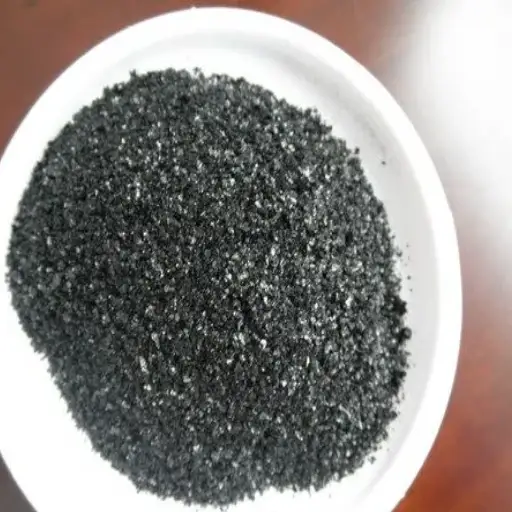Regarding farming and gardening, few decisions have as much bearing on soil health and nutrient delivery as those we make. Humic acid and potassium humate are among the most talked-about amendments for enhancing soil quality and plant growth. Despite both being sourced from organic matter, these compounds have unique pros and cons, which, if farmers understand, will help them make sound decisions about their fertilizer requirements. This piece, therefore, looks into the differences between humic acid and potassium humate and how they enhance the fertility of plants, improving overall soil health. Whether you’re a pro-farmer or an amateur planter, we intend to make you understand which choice would work better depending on your specific needs.
What is Humic Acid?
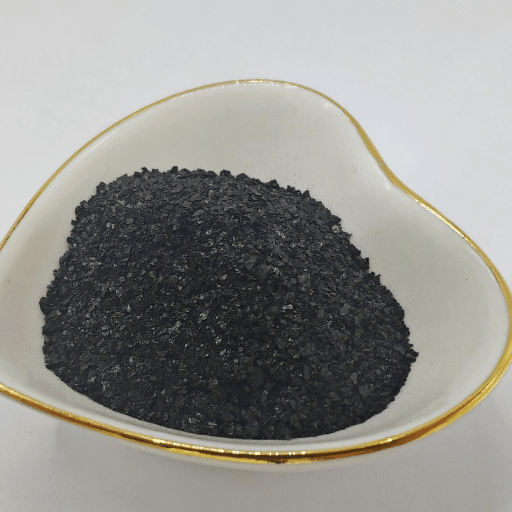
Definition and Composition of Humic Acid
Humic acid is a long-chain organic substance obtained naturally from the prolonged decomposition of plant and animal matters in the soil or sediment. It stands as a prime constituent of humic substances, which are humic acid, fulvic acid, and humin. Humic acid are considered higher molecular weight organic molecules and provide soil nutrients and improvement when applied.
Their composition consists mainly of carbon, oxygen, hydrogen, nitrogen, and in trace quantities, sulfur. The structure of humic acid is quite variable with aromatic and aliphatic portions tossed here and there with functional groups, such as carboxyl, phenolic, and hydroxyl groups. It is this unique structural design of humic acid that enables them to bond with minerals and nutrients, thus making them available to soils and improving soil fertility.
They improve the quality of the soil by enhancing water retention and microbial activity and preventing compaction. It also plays an important role in cation exchange capacity (CEC) of soils, wherein the soils can hold nutrients for longer duration. It can also assist in the chelation of metals, thus preventing their toxic accumulation and ensuring their balanced supply to plants for their growth. This makes humic acid one of the most versatile and effective materials in agriculture and soil management practices.
Role of Humic Acid in Soil Health
Humic acid greatly improves soil health and boosts agricultural productivity by making nutrients more available and more retainable. It increases the soil’s cation exchange capacity (CEC) for retaining and slowly releasing nutrients essential for plants: nitrogen, phosphorus, and potassium. This prevents leaching of nutrients so that crops get access to these nutrients in a balanced and stable manner over time.
In addition to humic acid promoting soil aggregation, thus improving soil aeration, water infiltration, and drainage, it also reduces bearing capacity of soils and increases water retention capacity, which is extremely important in drought management. These amendments also provide conditions favoring root development and microbial life in the soil, thus contributing to a healthy soil system.
Finally, humic acid reduces soil toxicity risk through the chelation of heavy metals. Such natural chelation processes diminish the bioavailability of metals that could hamper plant roots, thus creating an equilibrated chemical condition within the soil. These mechanisms enable humic acid to enhance sustainable agriculture by promoting plant health, improving crop yield, and upgrading soil quality.
Benefits of Humic Acid for Plant Growth
There are some nutrients that need to be absorbed by the roots while the plant grows. In this regard, humic acid helps by increasing the nutrient absorption capacity, thereby promoting good growth of plants. By enhancing soil CEC, humic acid makes various nutrients like nitrogen, phosphorus, and potassium more accessible to the plant roots. The greater the access, the greater the uptake by plants, thus ensuring that plants have ample nutrients for their own development.
On the contrary, humic acid assists in bonding soil particles into aggregates, thus improving soil structure. This allows better aeration, water retention, and root penetration because the soil environment becomes favorable for the development of root systems. A good microstructure does indeed prevent waterlogging and compaction, thereby ensuring long-term sustainance of growth conditions.
Finally, it encourages a fair amount of microbial activity in the soil. Beneficial microbes love and flourish in humic environments that break down organic matter and release nutrients that otherwise could remain unavailable to plants. This kind of natural pathway fosters a thriving symbiotic ecosystem further enriching the soils and creating the potential for continued agricultural productivity. Thus, in every areal perspective of the whole humic acid idea assists in recognition for the most efficient and sustainable ways of growing plants.
Exploring Potassium Humate
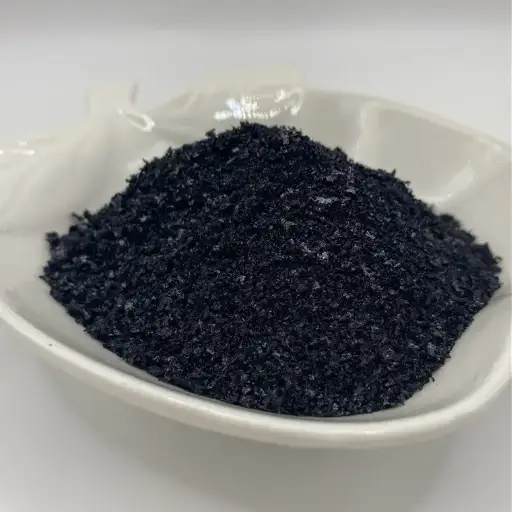
Understanding Potassium Humate Formation
Potassium humate being a water-soluble derivative of humic substances, which are organic macromolecules created by the natural decomposition of plant and animal matter over thousands of years. This decomposition would go on soil and sedimentary environments and under certain conditions of heat, pressure, and microbial activity. Humic substances consist chiefly of humic acids, fulvic acids, and humin. Potassium humate is formed when humic acids react with potassium hydroxide, generating a potassium salt with enhanced water solubility.
First, the humic acids are extracted from natural deposits such as leonardite or weathered lignite, which are highly oxidized varieties of low-rank coals. Leaching these deposits with alkalis allows for the isolation of the humic acid fractions. Neutralizing these humic acids with a potassium base gives the potassium humate product that highly promotes cation exchange and chelation of micronutrients, therefore making it more useful in agriculture by improving soil structure, enlarging root systems, and increasing nutrient uptake.
From the latest developments, modern techniques optimize extraction processes to obtain maximum yield and quality of potassium humate. Spectroscopic techniques such as infra-red and nuclear magnetic resonance (NMR) spectroscopy give very detailed information on the molecular masses of potassium humate, thus allowing very precise fine-tuning of the formulation. Only recent research has shown that potassium humate could enhance crop resistance to abiotic stresses, like drought and salinity, so further cementing its role in sustainable agriculture.
Impact of Potassium Humate on Soil Structure
Through options to enhance its physical, chemical, and biological properties, potassium humate strongly improves soil structure. It is referred to as a high-efficiency organic soil conditioner obtained from humic substances because they have a great role in soil aggregation and stability. Among other effects, it increases the cation exchange capacity (CEC) of soil and thus retains nutrients and provides them to plants. These nutrients made available as a result of this, increase soil fertility, making it favorable for agricultural productivity. Potassium humate also makes soil more porous with respect to air and water infiltration hence preventing any possible waterlogging.
Another important function of potassium humate is the development of beneficial soil microorganisms. Such microorganisms are important for nutrient cycling, organic matter decomposition, and maintaining a natural balance in the soil. In supporting the activities of these microbes, potassium humate enhances the formation of soil aggregates, which simultaneously protects the soil against erosion. Potassium humate further improves the organic content of soil in which water retention in the root zone is beneficial in drought situations. By reserving water in their root zones against periods of water scarcity, such soils offer good prospects for crop survival.
Therefore, potassium humate facilitates reduction in compaction and increased organic matter, which also improves soil structure in the long run, thereby ensuring soil health sustainability. It has been observed by research that soil treated with potassium humate generally has better resistance to physical stresses due to extreme weather events, such as heavy rainfall or extended drought periods. This resilience is not only paramount in enhancing agricultural production but also aids in soil degradation measures, which is an important global issue. Thus, potassium humate is an important agronomic practice and imperative to the extant sustainable land management strategies.
How Potassium Humate Enhances Plant Health
Potassium humate enhances the overall plant health due to its wide-range of impact on soil structure, nutrient availability, and stress tolerance. Acting as a soil conditioner, it improves the soil cation exchange capacity (CEC), which is crucial in retaining essential nutrients such as nitrogen, phosphorus, and potassium for plant growth. This enhanced nourishment allows roots to develop vigorously and plants to take up moisture and minerals effectively.
By promoting metabolic activity in conjunction with osmotic regulation, potassium humate makes plants more resilient to environmental stresses such as salinity, droughts, and temperature fluctuations. Acting as a chelating agent for trace elements that are pivotal in enzymatic activity and chlorophyll formation, potassium humate acts directly on photosynthetic efficiency and biomass production from that point.
It also promotes greater diversity of soil microbes by providing carbon sources to beneficial microorganisms benefiting from this interaction. These microbes work with decomposing organic matter and nutrient cycling, keeping an ecosystem self-sustaining and fertile. Potassium humate also aids in growing healthier and productive crops by diminishing the ill effects of heavy metal pollution and excessive soil compaction-i.e., completely in line with the current agricultural vision on sustainability and environmental stewardship.
Comparing Humic Acid and Potassium Humate
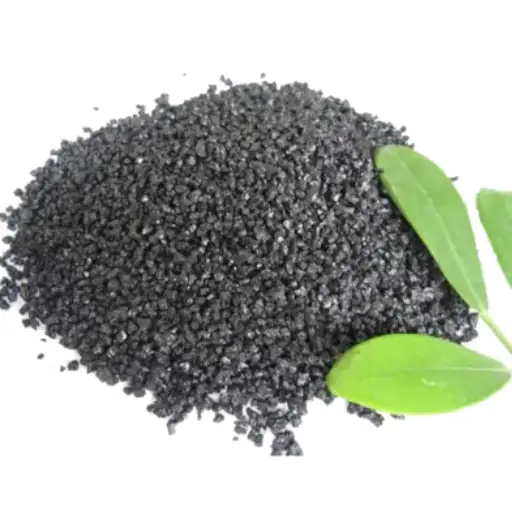
Key Differences Between Humic Acid and Potassium Humate
Potassium humate is the potassium salt of humic acid. They differ mainly in their solubility, production processes, and specific applications-thus, humic acid is insoluble in water and slower acting, whereas potassium humate is soluble in water and fast-acting. It is enriched with potassium to further stimulate plant growth.
Here is a brief table showing these main differences:
|
Aspect |
Humic Acid |
Potassium Humate |
|---|---|---|
|
Dissolution |
Poor |
Excellent |
|
Elements |
Organic base |
Humic + Potassium |
|
Creation |
Natural origin |
Chemically treated |
|
Usage |
Soil enhancer |
Crop booster |
|
Action Speed |
Gradual |
Immediate |
|
Advantage |
Soil health |
Growth support |
|
Focus Crops |
Universal |
Potassium-needy |
Applications of Humic Acid vs Potassium Humate
Humic acid is mainly used for soil conditioning and fertility enhancement, while potassium humate acts as a growth stimulant, water retention agent, and nutrient absorbers, especially for potassium-deficient crops.
Here is a short table summarizing the applications:
|
Aspect |
Humic Acid |
Potassium Humate |
|---|---|---|
|
Soil Impact |
Structure boost |
Fertility boost |
|
Crop Effect |
General health |
Growth enhancer |
|
Water Use |
Retention aid |
Retention aid |
|
Nutrient Role |
Organic matter |
Potassium source |
|
Application |
Soil treatment |
Irrigation, foliar |
|
Target Crops |
All types |
K-deficient crops |
Choosing the Right Humate Fertilizer for Your Soil
The decision whether to choose humic acid or potassium humate must consider various soil and crop-specific factors. Among the considerations are: soil composition, nutrient deficiencies, and the exact requirements of your crop. For instance, humic acid is used mainly for improving soil structure and increasing microbial activity. Such soils, which are compacted or have a deficiency in organic matter, really benefit from it. Meanwhile, potassium humate is used to cure potassium-deficient soils and to retain water better-thus favoring crops that require higher potassium levels for their growth.
The method of application is another factor affecting the selection of the product. Usually, humic acid is applied as an amendment to maintain general health and nutrient availability of the soil; potassium humate, however, can be applied through irrigation systems or as a foliar spray to provide targeted nutrient delivery.
A comprehensive soil analysis before picking a humate fertilizer for use is indispensable because identifying any imbalances and deficiencies makes all the difference. In conjunction with other pH values, organic matter levels, and nutrient availabilities, such evaluation forms the basis for selecting the right type of fertilizer, guaranteeing enhanced crop performance and sustainable soil management.
The Role of Humate and Humic Acid in Soil Fertility
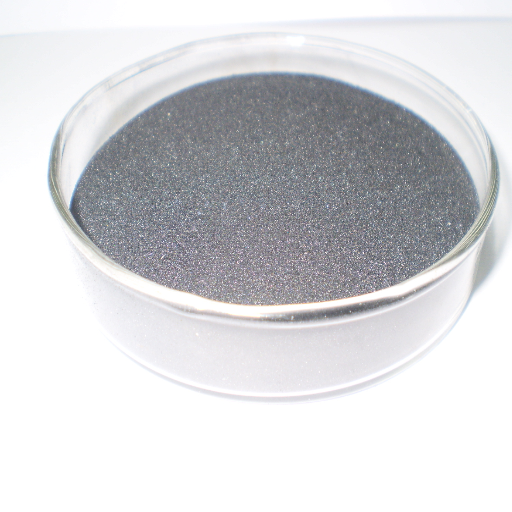
Improving Soil Quality with Humic Substances
Humic substances, chiefly humate and humic acid, affect soil quality through many mechanisms. Such organic substances raise CEC, which then maintains essential nutrients such as potassium, magnesium, and calcium in the soil. In addition, the formation of soil aggregates by humic substances increases soil porosity and aeration, which is crucial for root growth and microbial activity.
They also increase water retention of sandy soils while facilitating drainage of compact, clay-laden soils. By these mechanisms, humic substances keep soils at optimum moisture levels in a range of environments, encouraging strong plant growth. Research has shown that humic substances can chelate metal ions-limiting micronutrient states of iron and zinc-so as to allow for their greater bioavailability to plants, thus rectifying deficiencies that hinder crop yield.
Recent advances in agricultural science have put forth an assumption that the humic substances stimulate root elongation and enzymatic activities in plant metabolism. Experiments show that humate application at 25 to 100 kg/ha can produce substantial yield increases in cereal crops, with improvements in nutrient uptake and stress tolerance being most apparent. Thus, these data point toward the vital importance that humic substances have in sustainable soil management.
Effect of Humic Acid on Soil pH and Soil Particles
Humic acid modifies soil pH by acting as a buffer. In acidic or basic soils, it aids in stabilizing pH levels by combining with soil particles. The interaction between the acid and the suspension streaming into pH changes is mainly due to the donation or acceptance of H ions by its carboxylic and phenolic groups, which neutralize extremes of pH. Application of humic acid to soils with acidic nature or with a pH less than 5 has been shown by various studies to elevate the pH towards neutral, whereby microbial activity is favored and plant nutrient absorption is enhanced. Hence, in an over-alkaline soil, humic acid acts by slightly lowering the pH to improve the availability of micronutrients such as iron and zinc, which at higher pH are unavailable.
At a microstructural level, humic acid greatly influences soil particles concerning soil aggregation and porosity. Its molecular structure encourages the flocculation of clay particles, thus forming soil aggregates. These aggregates aid in the aeration and water retention of the soil and prevent its compaction. This characteristic is very helpful in sandy soils, whereby upon use of humic acid, the soil’s water-holding capacity is increased, or heavy clay soils can bear lowering of density and increased drainage. Various agricultural research studies have revealed that humic acid application could raise the aggregate stability by almost 30%, which translates directly to better root penetration and greater crop tolerance to stress.
Humph Acid reacts with soil minerals and some fraction of soil organic matter, thereby facilitating the release and subsequent chelation of nutrients essential to plant growth. Acting as a natural chelating agent, humic acids produce complex bonds to micronutrients such as iron, magnesium, calcium, and potassium, and keep them available for the plants. This chelation directly reduces losses by leaching, which otherwise occurs in sandy or highly irrigated soils. Nitrate leaching losses have been experimentally shown to be decreased significantly after application of humic substances, by as much as 25% in intensive farming systems. Application of humic acid, therefore, promotes sound soil, while modern sustainable agriculture, on the other hand, tries to sustain nutrient efficiency in plenty and lessen the effect on the environment.
Enhancing Soil Properties through Organic Matter
The organic matter imparts an important service to the soil by ameliorating the structure through an increase in aggregate stability and porosity, and of course, microbial activity. Structurally stable but firm soil is eroding less and compacting less; it is, therefore, able to absorb water adequately and retain it. These factors play a crucial role in passing the risks related to the occurrence of droughts or intense flooding, as organic matter-rich soils are resilient during extreme weather conditions.
The addition of organic amendments such as compost or residue is essential as a source of carbon for the microorganisms in the soil. A healthy microorganism population breaks down organic residues into readily available nutrients for plants. It has been proven by studies that soils with greater organic carbon can sustain microbial biomass of up to 50% higher than those with depleted organic content, and this directly affects nutrient cycling and soil fertility.
This shows how organic matter supports soil functioning but sustains agricultural systems by minimizing the use of synthetic inputs. This approach is compatible with the worldwide effort to rejuvenate soil while facing environmental challenges, which are soil degradation and greenhouse gas emissions.
Best Practices for Adding Humic and Using Humic Acid
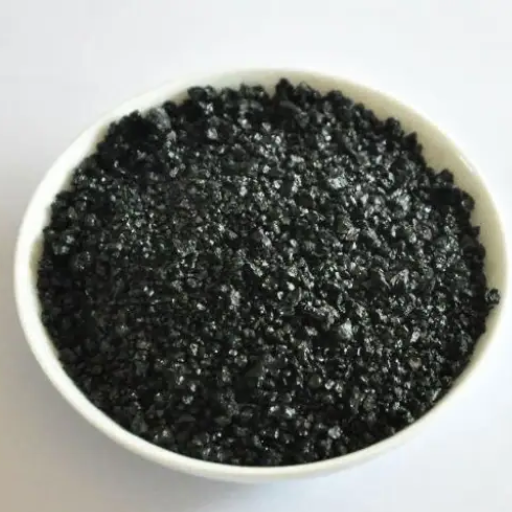
Guidelines for Application of Humic Products
Humic applications carry potential benefits if applied with consideration for soil conditions, crop type, and target results. Humic substances like humic and fulvic acids are chiefly responsible for enhancing soil structure, water retention, and nutrient availability. Thus, the following is an elaborate guideline on application:
- Selection of Humic Products: Application of humic formulations fitting the purpose of target soil types and crop requirements should be undertaken. Most are liquid formulations with an action for rapid penetration into soil, whereas granular forms take longer to act, especially in sandy soils or under depletion.
- Dosage Recommendations: The dosage or concentration of humic acid to be applied depends on the organic matter in the soil and the needs of the crop. A general suggestion can be: 1-3 gallons per acre (liquid) or 10-20 pounds per acre (granular), although a soil test will define precise requirements.
- Time and Frequency: Apply humic substances during major growing phases, such as seed germination, early vegetative stage, and pre-flowering. Repeat applications for long-term benefits seasonally or at planting.
- Compatibility with Other Inputs: Humic acids are mostly compatible with fertilizers and pesticides; however, it is always better not to mix them with highly alkaline products, for fear that a chemical reaction might lower their efficacy. Carry out a jar test on a small scale before applying wholesale.
- Monitoring and Adjustment: Tissue or soil tests and crop monitoring should be undertaken to enable adjustments to rates applied. Measure improvements in nutrient uptake, water retention, and yield to evaluate efficiency.
Thus, by adopting such recommendations, growers gain full benefits from humic substances that enhance soil properties and the productivity of crops within the sustainability framework.
Maximizing Benefits from Humic Acid and Potassium Humate
As for benefiting from humic acid and potassium humate, I make sure I apply them according to the exact needs of my crops and soil. The beginning usually entails testing for organic matter content in soil, along with pH and nutrient profile. Knowing the bare minimum that exists as a condition, I can then decide upon the concentration to be applied, along with a preferred mode of application amongst foliar sprays, soil drenching, or incorporation into irrigation systems. Greater emphasis needs to be put on sound nutrient management planning wherein the use of these materials complements rather than contradicts other inputs such as fertilizers.
I consider timing and continuous application as top priorities. Application of humic substances loose in the most crucial stages of plant growth as root development and flowering, may have a big impact on enhancing nutrient uptake efficiency, and even stress tolerance. Regular applications award a constant build-up of soil improvements in structure and activity of microorganisms; hence, the soil movement is strengthened. This is the hallmark of a resilient and sustainable production system. I keep records of crop performances, searching for well-being signs from enhancements in growth, deeper root systems, to improved yield quality.
I continue to educate myself about humic technology and scientific research to adapt my way of working. For instance, determining which formulation in the market, from soluble powders to liquid concentrates, fits with my irrigation mode and crop needs best. Thus, humic acid and potassium humate integrated with a forward-looking approach to agriculture not only increase present yield but also assure soil health for even better results in ensuing growing seasons.
Avoiding Common Mistakes in Humic Acid Application
Humic acid application should be done perfectly to achieve maximum results and also avoid any unwanted results that could undermine its benefits. A very common mistake is the incorrect dosages and timing of application during bad weather conditions. Application during the active growth phases of plants will create bodies that the nutrients can combine with for uptake, thus enhancing microbial activity. Moreover, the application of humic acid will lead to nutrient run-off during a downpour that can cause more inefficiency and environmental concerns.
Another error from common practice is that humic acid products do not get adequately diluted or correctly mixed. Concentrations of humic solutions should be adjusted to the crop type, the soil condition, and the irrigation system in use. Mismanagement here can either waste valuable resources or result in substandard performance. However, before any application takes place, a comprehensive soil analysis is required, as it gives data for possible adjustments in concentrations and application frequency to fit the exact soil needs.
Moreover, combining the humic acid with incompatible materials can decrease its power or may chemically interact to cause clogging in irrigation systems. Improper mixing with very acidic fertilizers or with products containing large amounts of calcium could outright neutralize its effect. It should be ideally followed by instructions given by the product manufacturer, and by carrying out a compatibility test beforehand.
Storage of humic acid products also comes into consideration. An improper method of storage could lead to a deterioration in the product quality due to high temperature, direct exposure to sunlight, and/or prolonged storage under unsuitable conditions. Generally, the manufacturer prescribes that their humic acid be stored in a cool and shade-protected environment to retain its stability and effectiveness.
By incorporating these best practices into an agricultural strategy, growers can avoid common errors during application, thus further maximizing the already enhanced effects of humic acid on soil structure, nutrient availability, and plant resilience, which benefits the grower in the long term.
Reference sources
Frequently Asked Questions (FAQs)
Q: What is the difference between potassium humate and humic acid?
A: Potassium humate is a potassium salt of humic acid. Humic acid is derived from the decomposition of organic matter. At the same time, potassium humate is created by reacting humic acid with potassium hydroxide, which increases its water solubility and makes it more effective in agricultural applications such as soil conditioning and foliar fertilizers.
Q: How is potassium humate produced?
A: Potassium humate is typically produced by treating raw humic acid powder with potassium hydroxide. This reaction increases the solubility of the humic acid, allowing it to be used more effectively as a humate fertilizer in various agricultural applications.
Q: What are the benefits of using potassium humate in agriculture?
A: Potassium humate improves soil structure, enhances nutrient uptake, increases water retention, and promotes microbial activity in the soil. This leads to better crop yields and overall soil health. It is also used as a soil conditioner and can be applied through drip irrigation systems.
Q: Can humic acid absorb nutrients in the soil?
A: Yes, humic acid can absorb and bind with nutrients in the soil, making them more available to plants. This is particularly beneficial for increasing the availability of micronutrients and improving overall soil fertility.
Q: Is sodium humate the same as potassium humate?
A: No, sodium humate and potassium humate are different compounds. Sodium humate is created by reacting humic acid with sodium hydroxide, whereas potassium humate is produced with potassium hydroxide. Both have high water solubility but are used differently depending on the specific agricultural needs and soil conditions.
Q: What are the uses of humic acid in agriculture?
A: Humic acid is used as a soil conditioner, foliar fertilizer, and in humate products to improve soil health and increase crop yields. It enhances nutrient uptake, improves soil structure, and promotes beneficial microbial activity.
Q: How does potassium in the soil benefit from potassium humate?
A: Potassium humate provides potassium to the soil, an essential nutrient for plant growth. It helps improve root development, enhances drought resistance, and boosts overall plant health, resulting in better crop yields.
Q: Can humic acid improve the solubility of other fertilizers?
A: Yes, humic acid can increase the solubility and effectiveness of other fertilizers. Its high water solubility makes it an excellent additive in various fertilizer formulations, making nutrients more available to plants.
Q: What are the benefits of high water solubility in humate fertilizers?
A: Humate fertilizers, such as potassium humate, have high water solubility, which ensures that the nutrients are quickly and efficiently absorbed by plant roots. This enhances nutrient uptake, improves soil structure, and supports healthy plant growth.
Q: What raw materials produce humic acid and its derivatives?
A: Humic acid and its derivatives, such as potassium humate, are typically derived from organic matter such as leonardite or peat. These raw materials undergo various chemical processes to produce humic acid powder, which can be further processed into different humate products.



